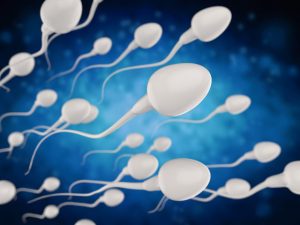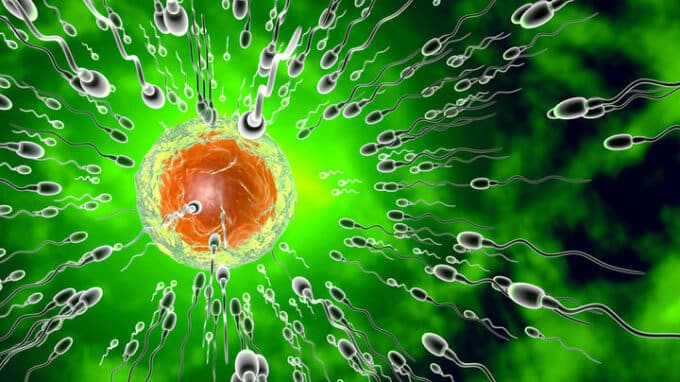Competition between sperm is fierce – they all want to be the first to reach the egg to fertilize it. A research team from Berlin has shown in mice that the ability of sperm to move forward depends on the protein RAC1. Optimal amounts of the active protein improve the competitiveness of individual sperm, while abnormal activity can lead to male infertility.
How the Genetic Factor “t-Haplotype” Promotes the Fertilization Success of Sperm
It is literally a race for life when millions of sperm swim toward the egg cells to fertilize them. But is it pure luck that determines which sperm is successful? In fact, there are differences in the competitiveness of individual sperm. In mice, a “selfish” and naturally occurring DNA segment breaks the usual rules of genetic inheritance – and gives the sperm that contain it a success rate of up to 99 percent. A team of researchers at the Max Planck Institute for Molecular Genetics in Berlin describes how the genetic factor “t-haplotype” promotes the fertilization success of sperm that carry it.
The  were able to experimentally prove that sperm with the t-haplotype are more progressive, i.e., they move forward faster than their “normal” counterparts, giving them an advantage in fertilization. The researchers analyzed individual sperm and found that most cells that made little progress on their journey were genetically “normal,” while the sperm that moved straight ahead predominantly contained the t-haplotype. Above all, however, they were able to link the differences in motility to the molecule RAC1. This molecular switch transmits signals from outside the cell to the inside by activating other proteins.
were able to experimentally prove that sperm with the t-haplotype are more progressive, i.e., they move forward faster than their “normal” counterparts, giving them an advantage in fertilization. The researchers analyzed individual sperm and found that most cells that made little progress on their journey were genetically “normal,” while the sperm that moved straight ahead predominantly contained the t-haplotype. Above all, however, they were able to link the differences in motility to the molecule RAC1. This molecular switch transmits signals from outside the cell to the inside by activating other proteins.
The molecule is known for directing white blood cells or cancer cells, for example, to cells that send out chemical signals. The new data suggest that RAC1 may also play a role in guiding sperm to the egg by “sniffing out” the path to its target. “The competitiveness of individual sperm appears to depend on optimal RAC1 levels; both reduced and excessive RAC1 activity impairs effective forward movement,” says Alexandra Amaral, a scientist at MPIMG and first author of the study.
t-Sperm Poison their Competitors
“Sperm with the t-haplotype manage to knock out sperm without this haplotype,” says Bernhard Herrmann, director at the MPIMG and the Institute of Medical Genetics at Charité – Universitätsmedizin Berlin and corresponding author of the study. The trick is that the t-haplotype “poisons” all sperm, but at the same time produces an antidote that only works in t-sperm and protects them. As the experts discovered, the t-haplotype contains certain gene variants that distort regulatory signals. These distorting factors are determined in the early phase of spermatogenesis and distributed to all sperm cells of a mouse with the t-haplotype. These factors are the “poison” that disrupts progressive movement.
The “antidote” comes into play after the chromosomes have been evenly distributed among the sperm during maturation – each sperm cell now contains only half of the chromosomes. Only half of the sperm with the t-haplotype produce an additional factor that reverses the negative effect of the distortion factors. And this protective factor is not distributed, but retained in the t-sperm.
Abnormal RAC1 Activity and Male Infertility
In sperm from male mice in which the t-haplotype occurs on only one of their two chromosomes 17, the researchers observed that some cells move forward and others make little progress. They tested individual sperm and found that the genetically “normal” sperm mostly did not swim straight ahead. When they treated the mixed sperm population with a substance that inhibits RAC1, they observed that genetically “normal” sperm were now also able to swim progressively. The advantage of t-sperm disappeared, showing that abnormal RAC1 activity disrupts progressive motility.
The results explain why male mice with two copies of the t-haplotype, one on each of the two chromosomes 17, are infertile. They only produce sperm that carry the t-haplotype. These cells have a much higher level of active RAC1 than sperm from genetically normal mice, as the researchers have now discovered, and are almost immobile. However, sperm from normal mice treated with the RAC1 inhibitor also lost their ability to move progressively. Too little RAC1 activity is therefore also disadvantageous. The researchers suspect that abnormal RAC1 activity could also underlie certain forms of male infertility. Genetic differences can give individual sperm cells an advantage in the race for life, thereby promoting the transmission of certain gene variants to the next generation.




